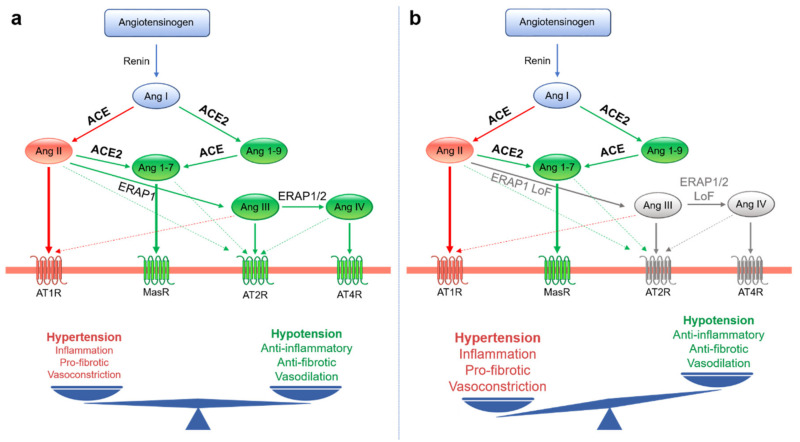Figure 2.
Schematic illustration of the renin-angiotensin system (RAS) showing the dual ACE- and ACE2-dependent pathways in the presence of functional (a) or dysfunctional (b) ERAP1 and ERAP2 enzymes. (a) In the classical ACE/Ang II/AT1R axis (red lines), Ang II binds its AT1R receptor, causing hypertension, inflammation, vasoconstriction, and fibrosis. The ACE2/Ang-(1-7)/MasR axis (green lines) counterbalances the harmful effects of the ACE/Ang II/AT1R axis. The cleavage of Ang substrates by ERAP1 and ERAP2 activities (green lines) is also shown. (b) Loss-of-function variants of ERAP aminopeptidases impair Ang III and Ang IV production, thus contributing to the increase of circulating Ang II levels and the resulting hypertension. Ang: angiotensin, ACE: angiotensin-converting enzyme, AT1R: angiotensin type-1 receptor, AT2R: angiotensin type-2 receptor, AT4R: angiotensin type-4 receptor, MasR: Mas receptor.

